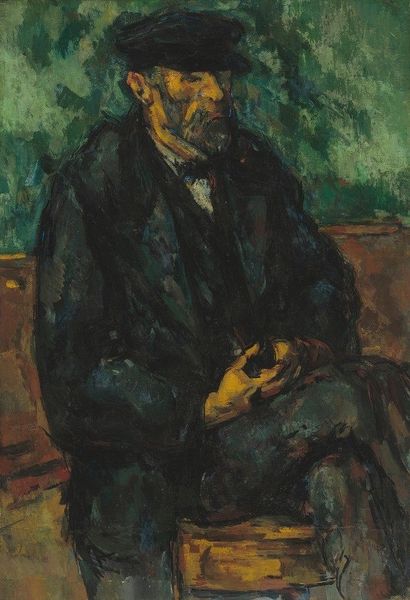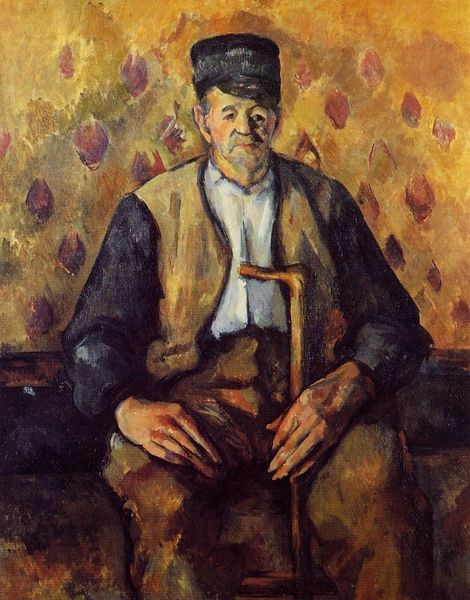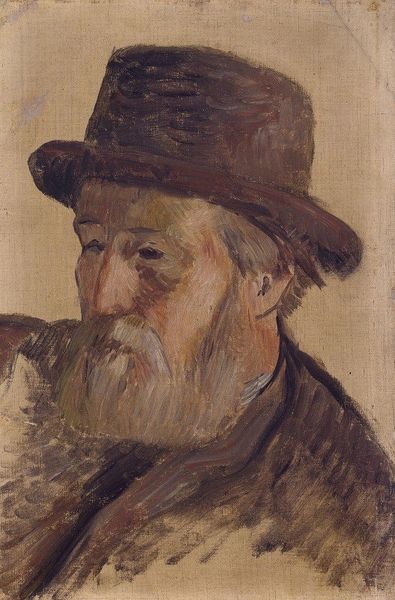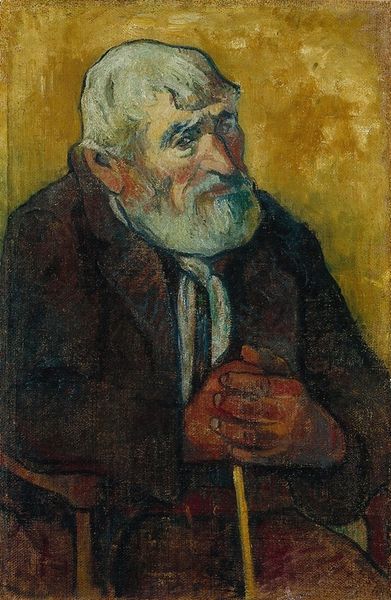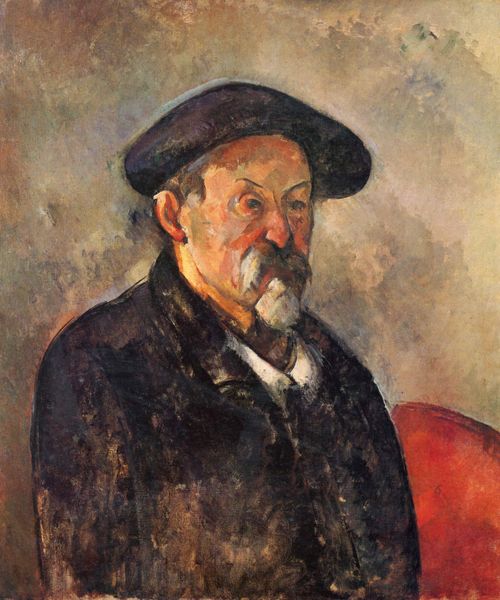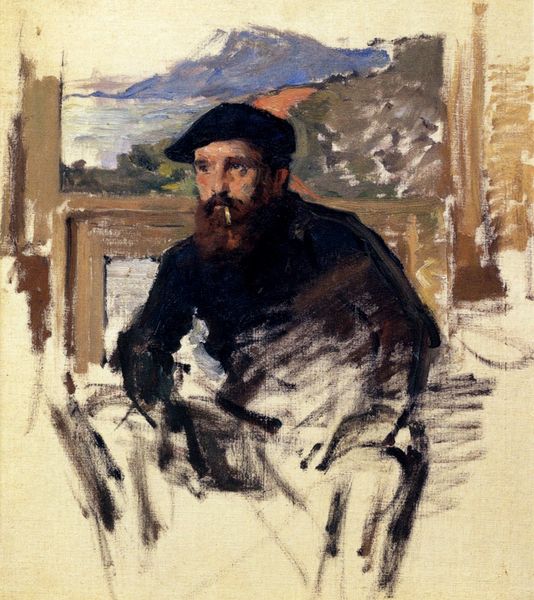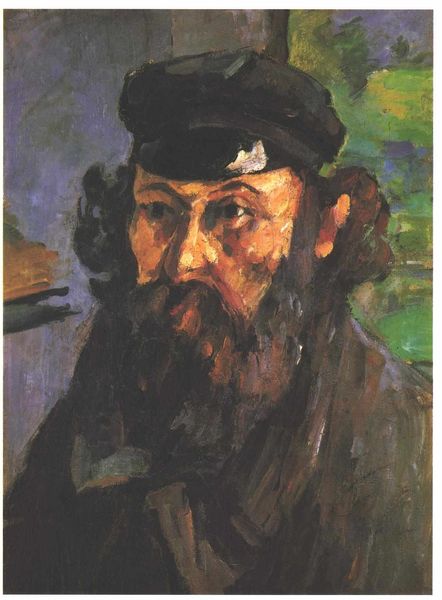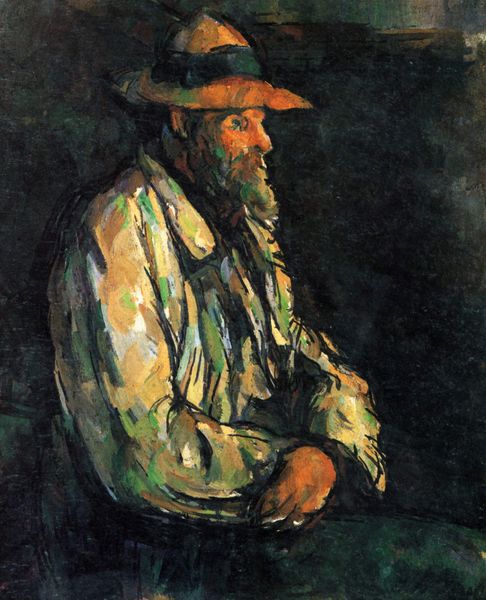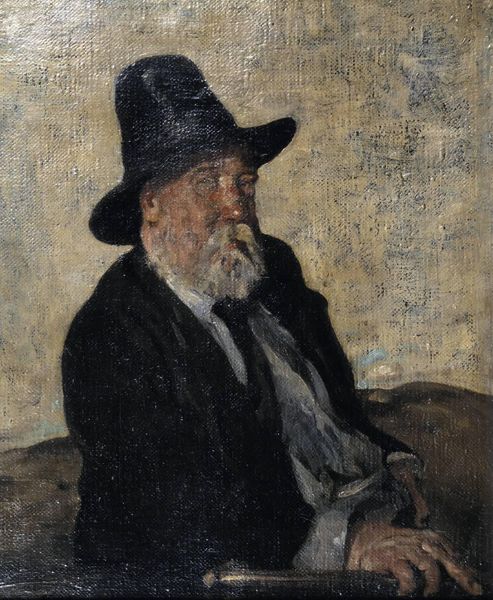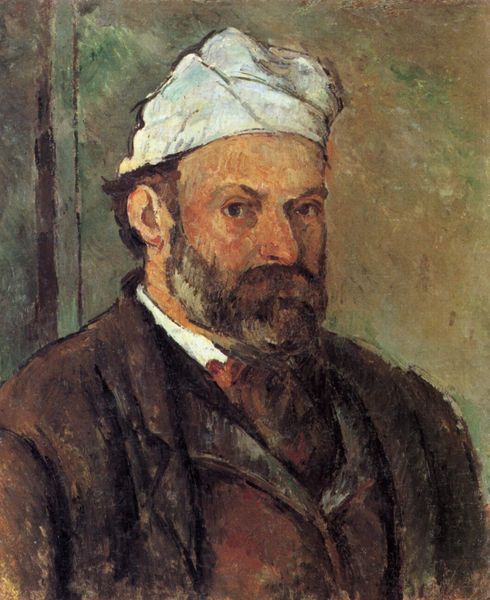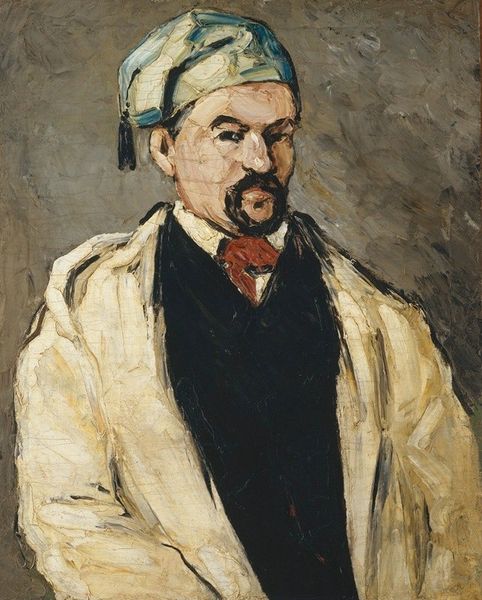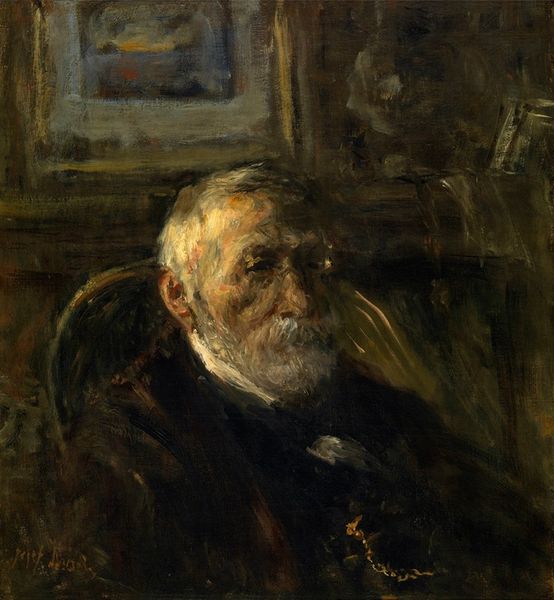
painting, oil-paint, impasto
#
portrait
#
painting
#
oil-paint
#
oil painting
#
impasto
#
post-impressionism
#
portrait art
Copyright: Public domain
Editor: This is "Portrait of the Gardener Vallier" by Paul Cézanne, painted in 1906. It's an oil painting that seems almost sculptural because of the thick application of paint. There's a stillness to the composition. What captures your attention when you look at it? Curator: You know, it's funny; the first thing I notice is how intensely present Vallier seems, despite the somber tones. It's like Cézanne is revealing the dignity of labor. I think Cézanne sees something noble in the everyday, and this is his way of immortalizing that. Editor: I like that. He's definitely not glorifying some aristocratic figure. It makes me think about class and representation at the time. Do you think Cézanne was making a conscious statement about that? Curator: It's tempting to read it that way. I like to think he was interested in the truth of a person. He almost seems to burrow past the exterior to expose something deeply human and unchanging. Don't you think? He's present. He just *is*. Editor: I can see that. I also noticed how the colours blend together, as if Vallier is part of the landscape, connected. Curator: Absolutely! Cézanne collapses those boundaries. Everything becomes interwoven; color creates form, form dictates space. He is one with nature! What a gift it is to understand, finally, the life of Cézanne! Editor: Thinking about this, it changes my appreciation of portraits in general. It makes me see people as more than just faces, but as landscapes themselves. Curator: Indeed, this gardener's portrait really seeds a new view!
Comments
No comments
Be the first to comment and join the conversation on the ultimate creative platform.
